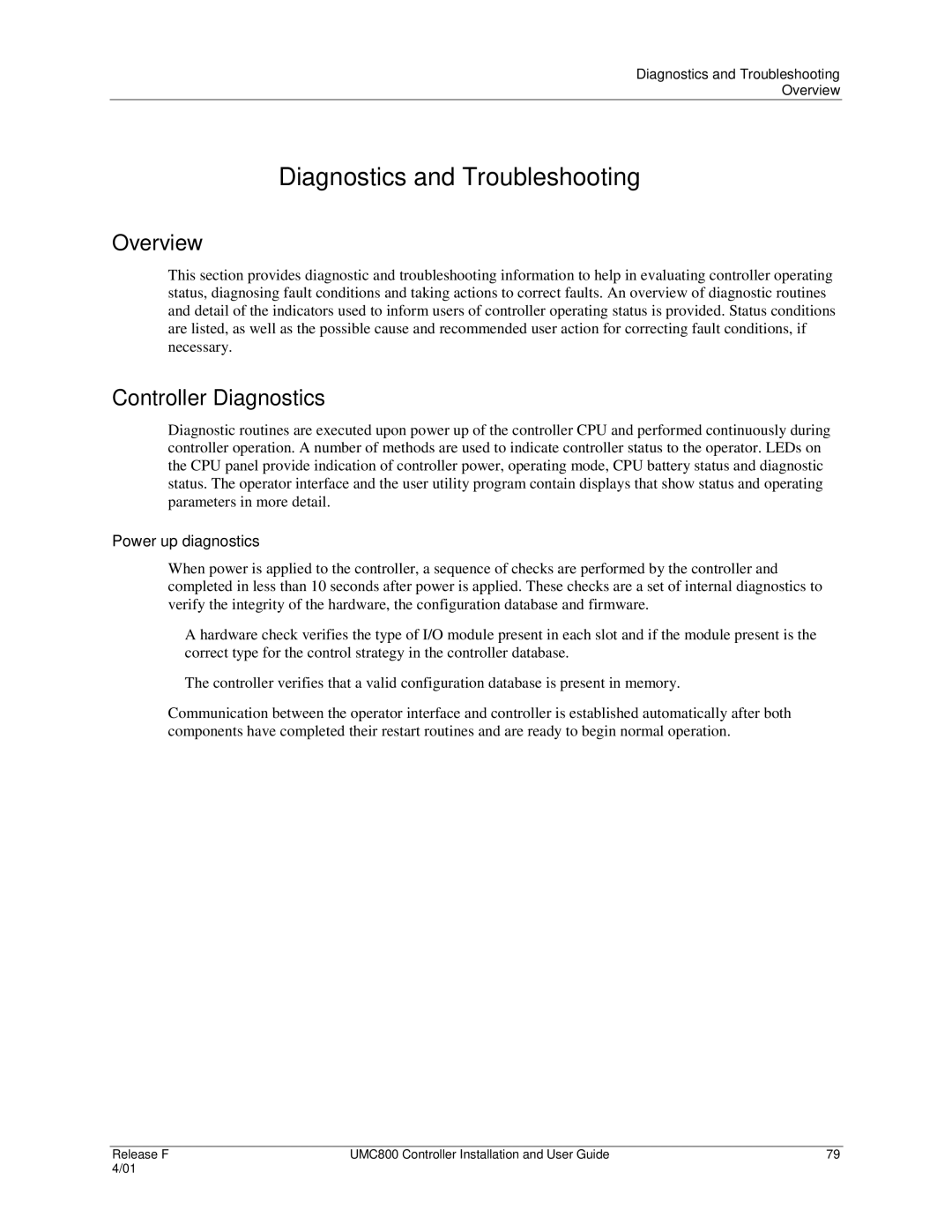
Diagnostics and Troubleshooting
Overview
Diagnostics and Troubleshooting
Overview
This section provides diagnostic and troubleshooting information to help in evaluating controller operating status, diagnosing fault conditions and taking actions to correct faults. An overview of diagnostic routines and detail of the indicators used to inform users of controller operating status is provided. Status conditions are listed, as well as the possible cause and recommended user action for correcting fault conditions, if necessary.
Controller Diagnostics
Diagnostic routines are executed upon power up of the controller CPU and performed continuously during controller operation. A number of methods are used to indicate controller status to the operator. LEDs on the CPU panel provide indication of controller power, operating mode, CPU battery status and diagnostic status. The operator interface and the user utility program contain displays that show status and operating parameters in more detail.
Power up diagnostics
When power is applied to the controller, a sequence of checks are performed by the controller and completed in less than 10 seconds after power is applied. These checks are a set of internal diagnostics to verify the integrity of the hardware, the configuration database and firmware.
•A hardware check verifies the type of I/O module present in each slot and if the module present is the correct type for the control strategy in the controller database.
•The controller verifies that a valid configuration database is present in memory.
Communication between the operator interface and controller is established automatically after both components have completed their restart routines and are ready to begin normal operation.
Release F | UMC800 Controller Installation and User Guide | 79 |
4/01 |
|
|
